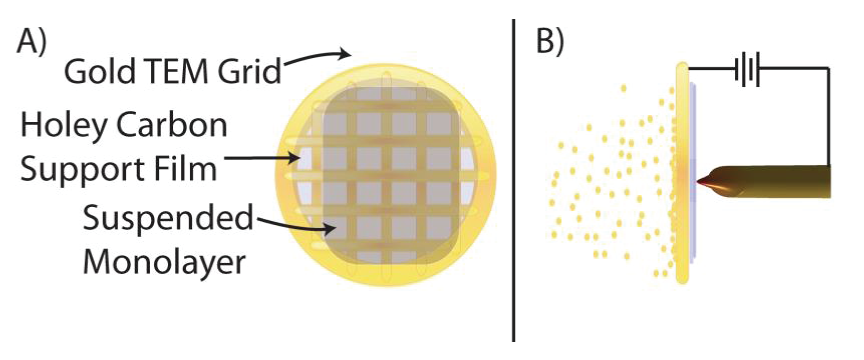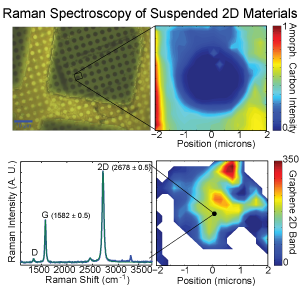Buried Interfaces and Instrisic Properties of 2D Materials

Electronic and optical properties of 2D materials have been shown to susceptible to substrate effects. Charged impurties and defects in the underlying material can also alter their chemical reactivity. By Suspending these materials, we can separate their intrinsic from their extrinsic properties. Graphene, for example, can be easily suspended onto a TEM grid as shown in panel A. As shown in B) both sides of the materials are available for either chemistry or characterization.

Guillermo has done a great job this summer of making these samples. In the upper left panel, we see an amorphous carbon coating on TEM grid with holes every 2 microns. Although you can't see it in the optical image, Raman spectroscopy can easily show that graphene is present. The D, G, and 2D peaks of graphene are easily distinguished from the amorphous carbon background. Similar to work by Berciaud et al. the 2D peak is stronger on the suspended areas, and effects due to electron-phonon renormalization can be distinguished in higher resolution spectra.
